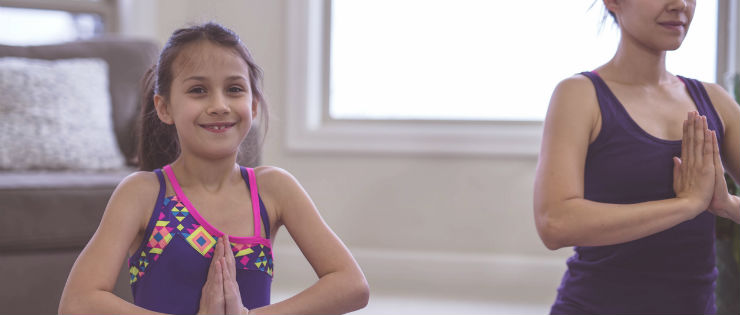
Modern daily life seems to be taking its toll on our kids. They are suffering from anxiety and stress-related disorders more now than in any other time in history. Many parents find themselves wishing their kids could enjoy the simple childhood they had. While it’s not possible to turn back time there are options for making your kids lives a little easier.
It is important for children to learn to not dwell on the past or worry about the future but to live in the present moment. Mindfulness allows kids to live life more fully and protect their mental health. Teaching your kids mindfulness techniques gives them some coping strategies to help them navigate childhood and the treacherous teen years.
Benefits of Mindfulness
Stress - Mindfulness is a stress relieving technique that they can use at school, sport and at home. Rather than removing themselves from a stressful situation, which is not always possible, kids can use mindfulness techniques to calm themselves.
Attention – mindfulness has been shown to improve children’s ability to make decisions, process memories and have improved attention.
Self-regulation – children suffering from fear and anger can use mindfulness to regulate these feelings and emotions, so they don’t manifest into other actions.
Confidence – with mindfulness training children can improve their self-awareness, self-confidence and resilience because they have the skills to cope better with problems.
Mental Health – Children who have been diagnosed with ADHD or anxiety can reduce the severity of the symptoms by learning mindfulness and using the techniques taught in difficult situations.
Techniques
Use your child’s senses to help teach the techniques of mindfulness. There are several activities during your child’s day that involve more than one of their senses. Help your child stay on task so their mind doesn’t wander by pointing out different things and asking them questions which make them think. Here are a few examples.
Brushing Teeth – Encourage your child to think about all aspects of their teeth brushing exercise rather than doing it on auto-pilot each day. Ask them to think about the smell of the toothpaste, the noise of the bristles as the toothpaste is applied and the sensation of the brush on their teeth and the taste on their tongue.
Meal Preparation – Teach your child to cook and be mindful at the same time. Ask them to gather the ingredients together then feel the smoothness or roughness of each vegetable. Have them smell each one to see if they can detect a scent. As they use a knife to chop vegetables, ask them how hard or soft the items are and what changes they notice as the food is cooked.
Gardening – There are plenty of opportunities for mindfulness in the backyard. Choose a plant that needs repotting, seeds or seedlings that need planting and ask them to feel and smell the leaves, soil and water you are using. Feel the breeze or sun on their back as they work. Being able to appreciate nature is a technique your child can continue to use throughout their life.
Getting Started
As a parent, you can start by practicing mindfulness yourself. When you are spending time with your kids, be fully present. Put your phone down so you can concentrate solely on them. If you begin to think of the list of things you should be doing around the house, put it out of your mind until after the time you committed to spend with the kids.
Find the best time to practice mindfulness. For some children, the weekends and school holidays may be better than after school because they aren’t tired and distracted from being at school. Once you find activities and times that work best, undertake regular mindful sessions so they can use the techniques on their own.